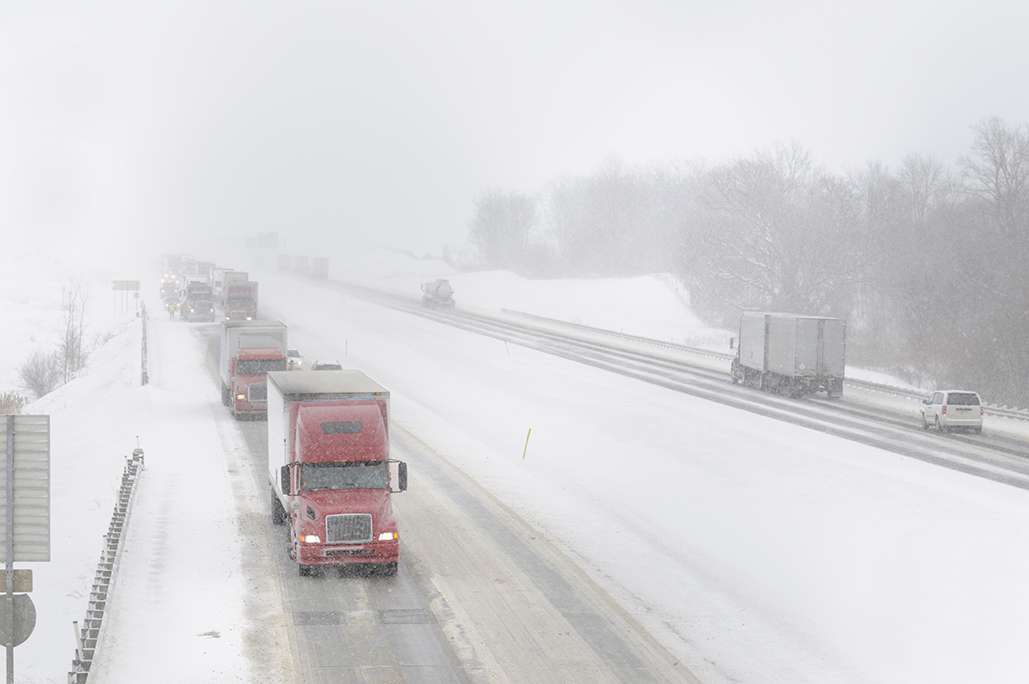Winter Driving—Wind, Snow, and Ice. Oh, MY!

Not only is winter coming, but we’ve already gotten a taste of what it will look like in the Midwest. We’ve had a preview of snow, ice, freezing rain, and frigid temperatures, which can make for beautiful scenery but less than ideal driving conditions if you’re unprepared.
We’ve got a few thoughts and suggestions to make sure you’re prepared for whatever Mother Nature throws at you this winter.
Should Your Tires Have Less Air Than Recommended?
The short answer is no.
Make sure your tires are inflated properly for snow and ice. You can ignore the myths you have heard about how tires should be inflated for winter driving. It is always the best choice to ensure they are filled to the manufacturer’s specifications to keep you and other drivers safe while on the road.
Under-inflating tires can sound like a good idea to get more rubber on the road surface but, in reality, there are too many dangers in this practice to make it safe. In new, unpacked snow, having a fully inflated tire will cut through the snow down to the pavement, which is always safest. If you find yourself on plowed pavement after going through an icy or snowy patch, under-inflated tires can quickly overheat, leaving you vulnerable to blowing out your tires. Tires that are not properly inflated also do not handle well, leading to a higher risk of accidents. Besides, who wants to stop to let the air out of all the tires of an 18-wheeler? In this case, the easier answer is the correct answer.
Alter Your Driving Habits
We’ve all seen the videos of winter mishaps, and they can be shocking. We may have even had a few of our own close calls. Many times, the major pile-ups could be avoided if drivers did a few things differently.
If you are driving along and the weather suddenly becomes bad, ease up on the gas. Even if the cars are still whizzing past you, you can prevent getting into a sticky situation by taking your time.
Did you know that roadways can start to ice over between 30 and 34 degrees Fahrenheit? Give yourself even more space from the car ahead of you than you think you need. Stopping a semi-truck always takes more time than a passenger car and, when the weather is bad, you’ll be glad you have that extra distance when the driver in front of you hits their brakes.
A little extra patience can go a long way in inclement weather. Getting there safely is the most important part of a driving career.
Be Prepared for Delays
In the event of a serious slow down, or even complete stopping of traffic that won’t be moving for a while, make sure you have everything you’ll need in your cab. Boots, a hat, and gloves should always be at the ready in case you need to exit your truck in poor weather. You may want to keep a few hand warmers available too. A flashlight might also come in handy during night drives.
Prioritize Visibility
Remember to keep all fluid levels full—especially your windshield wiper fluid! Driving in snow and freezing rain is a lot safer when your visibility is impacted as little as possible. Use a wiper fluid that is rated for colder weather, and make sure your wiper blades are in good condition before heading out on a snowy route.
Summary
We hope this winter is mild and safe for all of NTB’s drivers. Share your winter driving tips in the comments below or on our Facebook page.
Drive for a company that cares about safety: Apply to drive with NTB.
Ride with Pride: Shop NTB gear from mugs to sweatshirts.